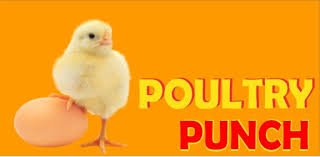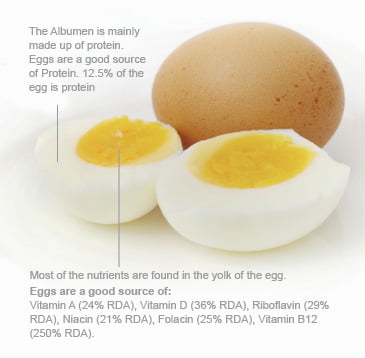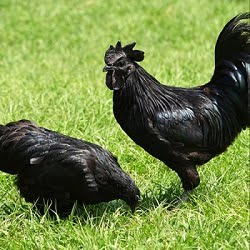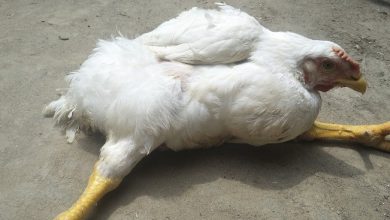COMMON ECTOPARASITES OF POULTRY AND THEIR MANAGEMENT

Rukkiya Siddiqui1, Meesam Raza2
1M.V.Sc. Animal Nutrition, GBPUA&T, Pantnagar 2PhD, Poultry Science, ICAR, IVRI, Izatnagar
Introduction
Insects (ticks, mites, fleas, lice, etc.) nuisance is not a new problem and well known to everyone since old age especially in the animals. A number of these infect birds and cause severe irritation which leads to loss of feathers, loss of weight and low numbers of eggs. Small ticks feed on the blood of birds and can carry germs which will cause other diseases. External parasites hide in the walls, floors and bedding of the cages and houses where birds are kept.
To control the parasites, it is necessary to keep these places clean and kill any parasites there. Today, tick control has become a challenge to researchers exploring a sustainable way to mitigate the problem of tick infestations. Chemicals groups commercially available in the market viz., synthetic pyrethroids, organophosphates, formamidines and macrocyclic lactones are repeatedly used for the control of ticks infesting livestock and poultry. Common Signs and Symptoms: Heavy infestations decrease reproductive potential in males, egg production in females, and weight gain in young birds; they can also cause anemia and death.
Some of the common external parasites which infests poultry include:
1.Mites
(a).Chicken mite/Red mite/Roost mite (Dermanyssus gallinae )

(b).Depluming mite(Knemidocoptes gallinae)

(c).The northern fowl mite( Ornithonyssus sylviarum)
Northern fowl mites are obligate bloodsucking parasites that normally spend their entire life cycle (~1 wk) on the host. Off the host, mites may live upto 2 mo, depending on temperature and relative humidity.
(d). The scaly leg mite (Knemidocoptes mutans)
It usually tunnels into the tissue under the scales of the legs. It is rare in modern poultry facilities. Transmission is by contact. Infections can be latent for long periods until stress triggers a mite population to increase.
(e).Feather Mite
They feed mainly on feather oils, debris, fungi, and skin scales, however they are rare on modern poultry ranches.
(f). Common Chigger (Trombicula alfreddugesi)
Itinfest birds as well as people and other mammals, feeding on partially digested skin cells and lymph.
(g).The tropical fowl mite( Ornithonyssus bursa)
It is distributed throughout the warmer regions of the and closely resembles the northern fowl mite in its biology and habits but lays a greater proportion of its eggs in the nest. Hosts include chickens, turkeys, ducks, pigeons, sparrows, starlings, mynah birds, and people.
(h).Turkey Chigger (Neoschongastia Americana)
They are the major pest of turkeys ranged on heavy clay soils in the summer. The chiggers feed in groups of as many as 100 mites per lesion for 8–15 days. Turkeys may have 25–30 lesions each. One lesion, 3 mm in diameter, may cause significant downgrading at market time. To prevent downgrading, turkeys must be protected for at least 4 wk before marketing.Sprays or dusts of carbaryl, malathion, or chlorpyrifos on turkey ranges control chiggers.
2. Fowl Tick (Argas persicus):

3. Fleas
(a).The sticktight flea (Echidnophaga gallinacea)

(b). The European chicken flea/hen flea(Ceratophyllus gallinae) It is found worldwide. It breeds in nests and litter and is on the birds only to feed. Heavy flea infestations cause host emaciation and reduced egg production..
Prevention and Control of external parasites in poultry
• Eliminate wild birds from the poultry house. This can be done by repairing any holes in the roof or sides of the house that birds might use as entry points.
• Regularly check birds for signs of mite and lice and check common hiding places such as under perches and in cracks.
• Another important preventive measure is to be sure all equipment and new birds coming into a flock are free of lice and mites.
• Most of the chemical acaricide are slowly becoming less efficient due to development of resistance against them, currently AMITRAZ is widely popular and effective acaricide which is used in the commercial poultry production after pyrethroids. The ideal acaricide should be long-lasting, selective, and should not induce resistance, be also safe for the host, easy to apply and quick-acting, should not corrode farm equipment, with a short withdrawal period and be cheap.
• At present, none of the molecules used against mite has all these features. The exclusive use of acaricides is still a reality worldwide. Poultry farmers have little choice and often use acaricides licensed for crops and/ or livestock pest control because of the lack of molecules licensed for use against D. gallinae and other ticks and mites, also for the prophylaxis and control of these poultry pest. Recent advanced option is fluralaner compound which is a systemic insecticide and acaricide that is administered orally. The U.S. Food and Drug Administration (FDA) approved it for use in animals
Conclusion:
Today, ectoparasite control in poultry has become a challenge to researchers exploring a sustainable way to mitigate the problem of tick infestations. Chemical groups commercially available in the market are repeatedly used for the control of ticks infesting livestock and poultry, however, these chemicals kill non-target organisms and threaten human health due to the toxic residues in meat. Hence, proper managemental practices along with judicious use of chemicals can help mitigate the problem of ectoparasites in poultry farms.




